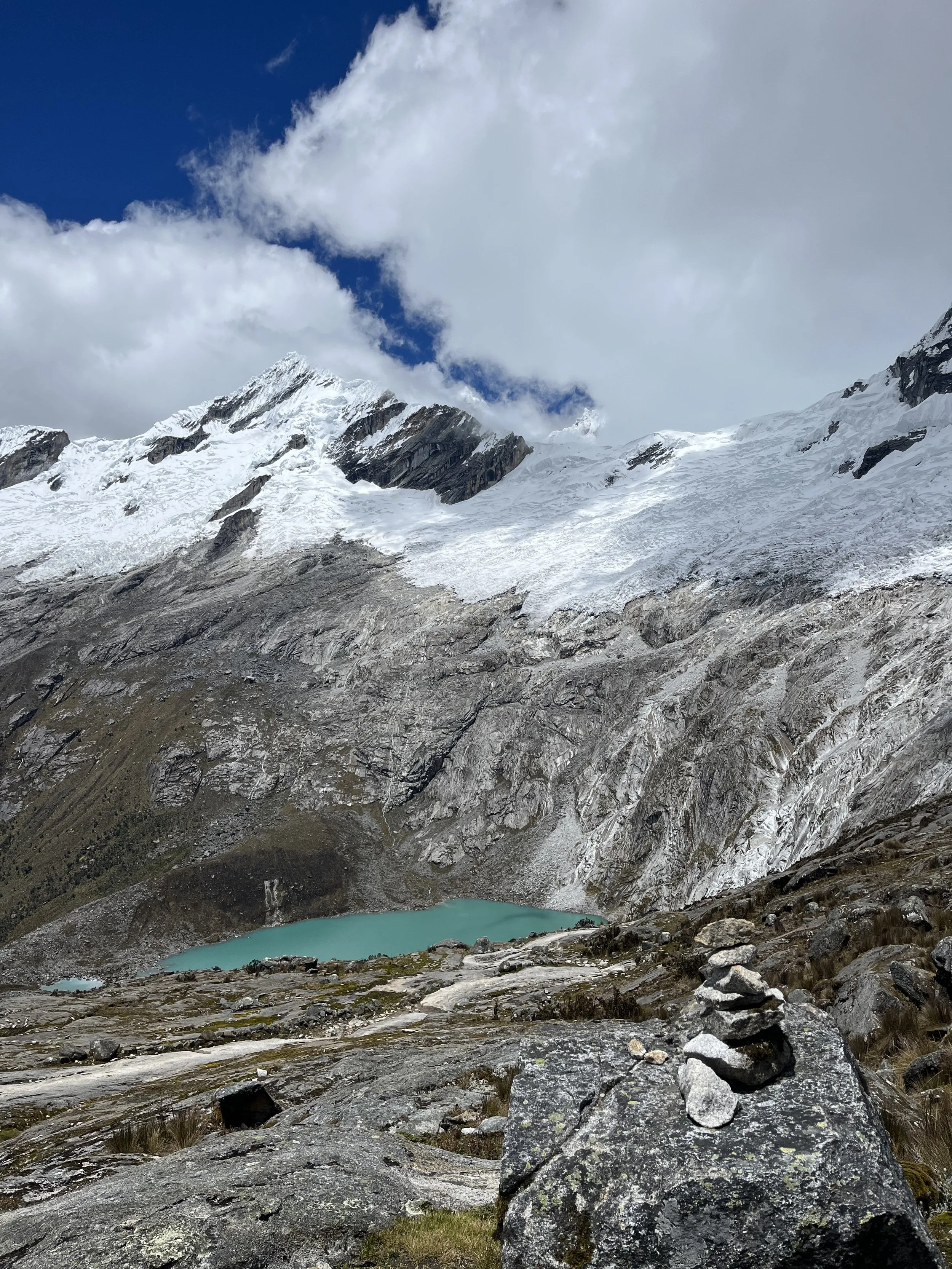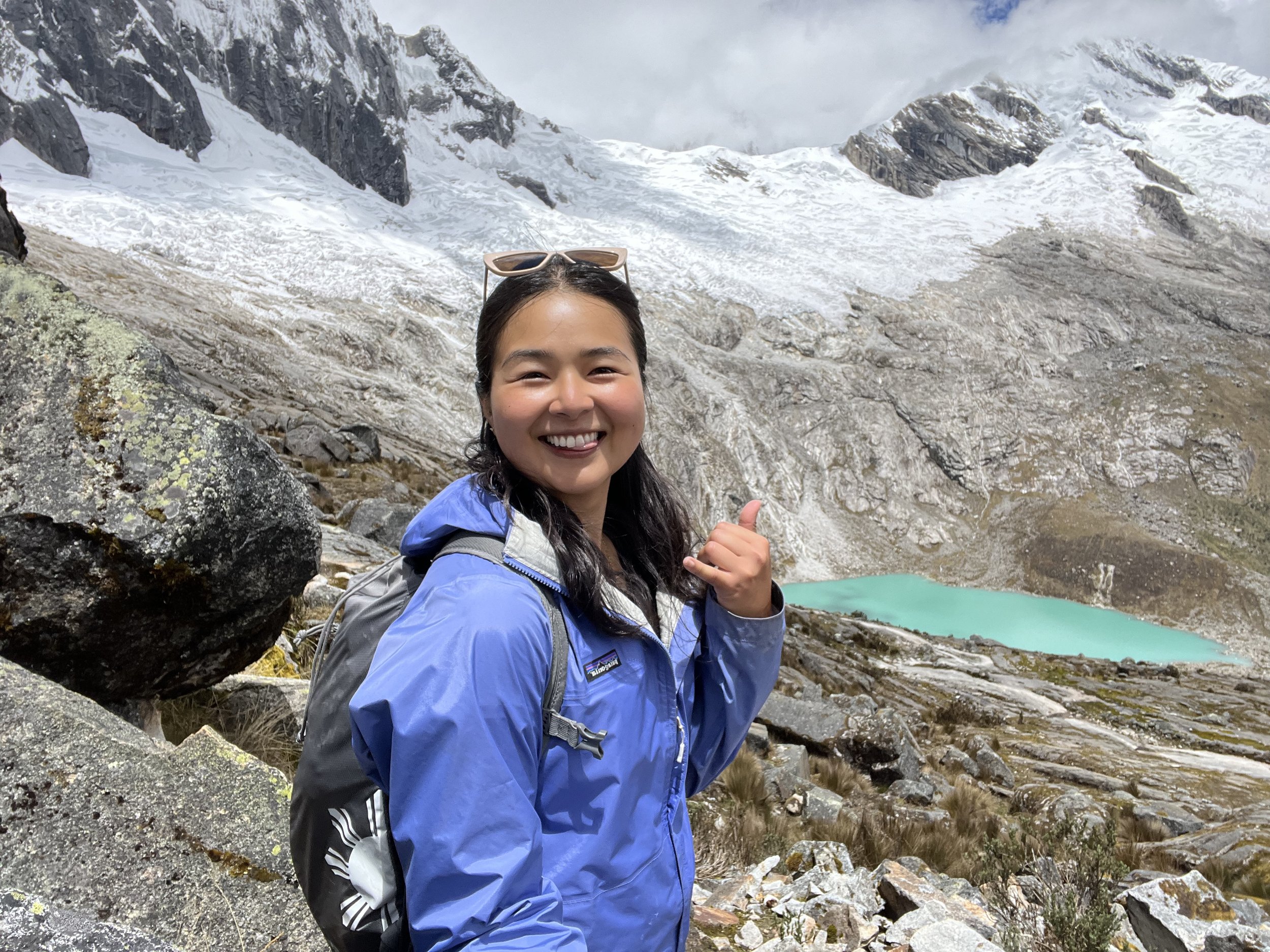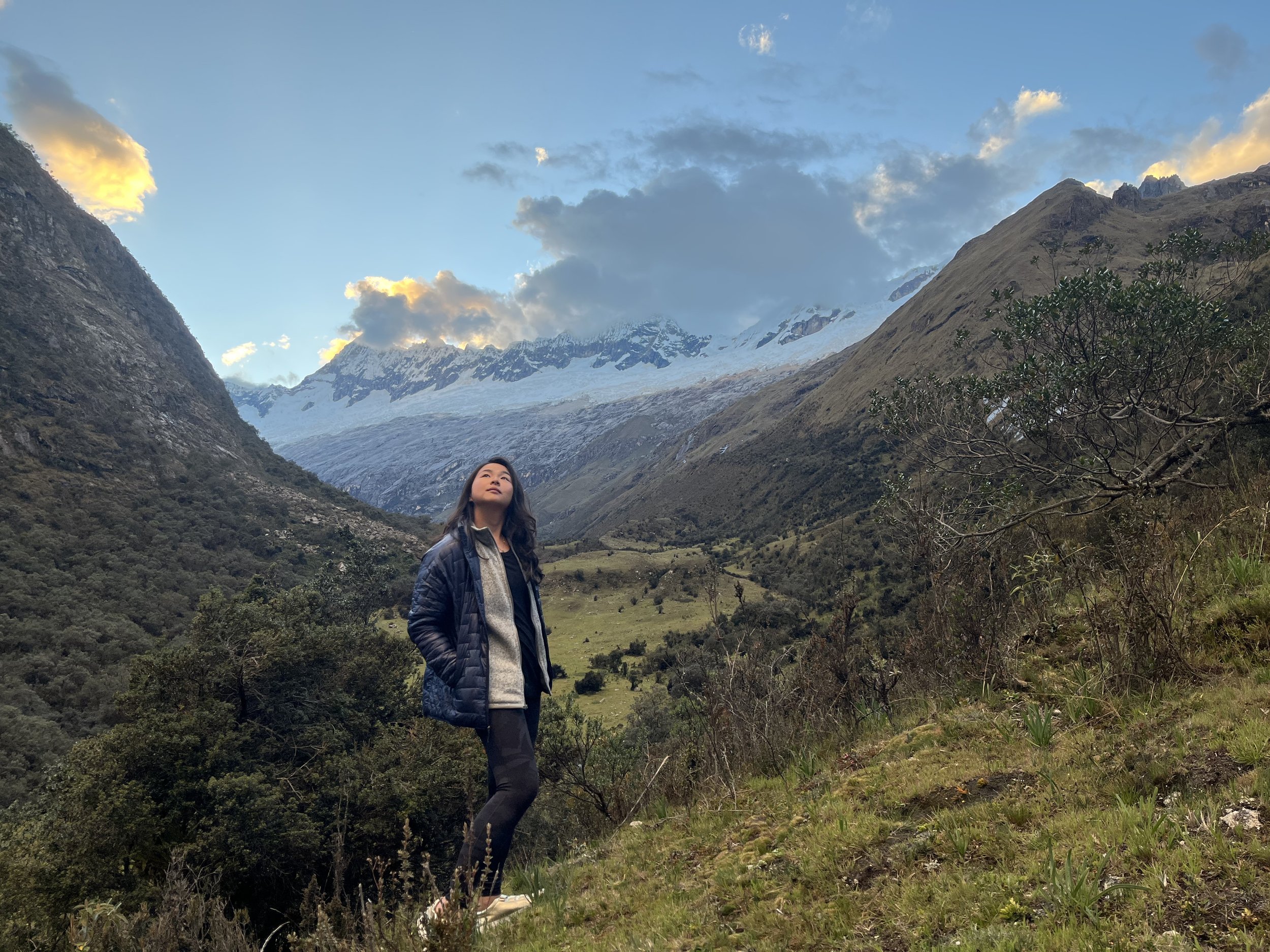On the ascent to Punta Union in the Peruvian Andes, I remember thinking, why do I do this to myself? Why do I climb the top of big rocks only to come down? Will there ever be an end to the climb of this rock?! I was heaving out my breaths, and despite that, it never seemed like enough oxygen.
The morning full of lagoons, snow capped mountains, and lush green trails faded into distant memory as I focused all my mental faculties to get through every present moment of incline. Ronaldo, the guide, had said we simply had to ascend to the small V-shaped opening on top of the mountain but the “simple” hike up featured intensely steep switchbacks all the way up 4,750 m.
But just as “the darkness declares the glory of light," the exertion made the summit view all the more sweeter.
Huaraz will always be beloved for me because it was the site of the Santa Cruz trek: my first multi-day hiking and camping trek. Of course, this trek made all the more easier by going on a tour with a guide, porters and cook, but a new achievement unlocked nonetheless.
Hiking in wet season means occasional rain and muddy trails, but it also means relatively empty trails and lush scenery too. For five days, I saw only colossal mountains, rushing rivers, green valleys, and kaleidoscopes of vegetation. I experienced still silence, in both the material world and even in my own head. I saw snow tumble down mountain tops and herds of still horses making meals out of fields. I came across surprise pockets of teal-blue lagoons and stared at golden sunsets. I always forget that the river runs continuously at night, that it doesn’t shut off when it’s dark. I remembered how sweet the satisfaction it is to go to bed physically exhausted.
My immigrant Vietnamese parents don’t quite understand why I enjoy hiking. My mom exasperatedly complains, “Our family escaped the mountains, why would you willingly go back?’
Mountains project a solid, constant presence, but our perceptions of them fluctuate, depending on from where and from when we view them.
Before the 17th century, in the Western world, we thought of mountains as ugly—warts or protuberances upon the Earth. Suddenly, from the end of the 17th century to the mid 18th century, you get this change when people begin talking about mountains as cathedrals or pillars to God. Scholars have argued—rightly I think—that what’s going on there is that people have begun to associate empty, large infinite-seeming spaces with God. As space now is God, these places aren’t empty wastelands anymore. They’re literally where God is in the world.
The way that Nicolson describes it is that these philosophers of space and time are laying the foundations for an aesthetics of the infinite, for an appreciation of infinite-seeming things, like mountain ranges.
-Emily Thomas on Marjorie Hope Nicolson’s study of this shift in her seminal book Mountain Gloom and Mountain Glory
Whereas in Peru, Ecuador, and Bolivia, Indigenous people never needed to learn how to appreciate mountains. They address mountains as apu, a protective living spirit, and have been centering their religious rites and mythologies to them before Incan times. In China, mountains have always loomed large in the material and spiritual worlds: emperors would conduct pilgrimages to them, old poets and painters revered them, and devoted monks escaped into them.
Our view of mountains, and the world, change depending our positions of race, class, gender, individual agency and preference. Of course my parents, and my ancestors who knew of nature as a volatile enemy of easy existence, would have a different experience from me, who has only experienced it in good spirits and good weather.
That is to say, places are not objective physical sites. As geographer Yi-Fu Tuan explains, “People think that geography is about capitals, land forms, and so on. But it is also about place — its emotional tone, social meaning, and generative potential.” After all, all reality is interpretation. There is meaning where we create it.
Answering why we do things requires two parts: the context that influences our perceptions, and the individual drive that leads to our actions.
My disposition towards mountains is telling of the influence of Western Romantic thought, my socio-economic status in which I find little physical exertion in my daily life, and a persona that craves intense challenges and spirituality in natural beauty— but it doesn’t explain the reason why I climb them.
My happiest moments of a trek is not when I ascended the actual summits, but just a few moments before I descend them: when I realize that there are yet summits to go. I climb not for the peak relief of a summit, but for the mounting confidence that I have and will trudge on through any challenges that come my way.
The views along the way, of course, doesn’t hurt.
When you think of mountains, do you think of mountain gloom or glory?
Are you more of a summit person, or the person who likes the stops along the way— and why?












